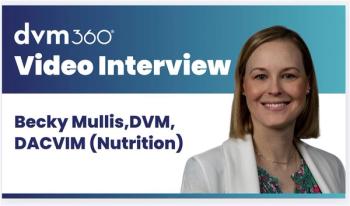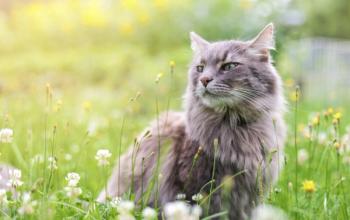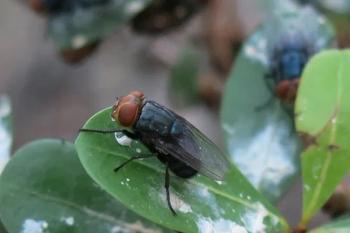
FDA urges pet food businesses to address H5N1 in their food safety plans
The announcement comes as raw pet food products have tested positive for bird flu amid fall migratory season.
Earlier this fall, the FDA issued a reminder to pet food manufacturers to consider the highly pathogenic avian influenza H5N1 in their food safety plans as H5N1 cases tend to increase during the fall migratory season.1 The reminder comes as several raw cat and dog foods have tested positive for H5N1 in the last few months, leading to the illnesses and deaths of multiple pets.
Most recently, a cat in San Francisco, California, became infected with H5N1 after eating
“During the fall migratory season, H5N1 detections typically increase throughout the United States in wild birds, with potential spread to commercial and backyard poultry flocks,” the FDA wrote in its September 30 announcement.1 “Given this seasonal pattern, the FDA is reissuing this [Center for Veterinary Medicine] Update to remind pet food manufacturers that H5N1 represents a known or reasonably foreseeable hazard when using certain ingredients.”
Raw meat, especially poultry, and unpasteurized milk have been sources of H5N1 infections in domestic and wild cats, the American Veterinary Medical Association noted in a recent news report.3 Dogs are also capable of contracting H5N1, but clinical signs are typically mild and mortality is low. Felines, however, have shown to be particularly susceptible to severe illness caused by the virus, with the illness often leading to death.4
In its announcement, the FDA reminded animal food businesses that its Food Safety Modernization Act Preventive Controls for Animal Food (PCAF) requires these businesses to develop a food safety plan that identifies and evaluates potential hazards in their animal food and determines whether preventive controls are needed. Businesses can find more information on these requirements in the FDA’s Center for Veterinary Medicine’s Guidance for Industry #245, “Hazard Analysis and Risk-Based Preventive Controls for Food for Animals.”
Under the FDA’s PCAF requirements, animal food businesses must revisit their food safety plans whenever the FDA identifies new risks. The agency now says cat and dog food makers that use raw or unpasteurized poultry or cattle products, such as uncooked meat, unpasteurized milk, or unpasteurized eggs, must update their plans to account for H5N1 as a potential hazard.
“The reanalysis is necessary to respond to the recent domestic cat illnesses and deaths... and to scientific data indicating that cats and dogs have become ill from consuming H5N1 virus,” the FDA wrote.1 “Manufacturers that implement a preventive control for the H5N1 hazard as a result of their reanalysis will be taking an important step toward protecting cat and dog health and helping to prevent spread of H5N1. Addressing H5N1 will require a concerted effort across sectors, including by government, businesses, and consumers.”
The FDA also advises pet food manufacturers to source ingredients from healthy flocks and herds and use processing steps, such as heat treatment, which has shown to effectively neutralize H5N1 in meat, milk, and eggs. Another approach is to apply controls throughout the supply chain to ensure that ingredients do not come from H5N1-infected animals.1
References
- Cat and dog food manufacturers required to consider H5N1 in food safety plans. US and Food and Drug Administration. September 30, 2025. Accessed November 17, 2025.
https://www.fda.gov/animal-veterinary/cvm-updates/cat-and-dog-food-manufacturers-required-consider-h5n1-food-safety-plans . - McCafferty C. Raw cat food tests positive for H5N1. dvm360. September 4, 2025. Accessed November 17, 2025.
https://www.dvm360.com/view/raw-cat-food-tests-positive-for-h5n1 - FDA reminds pet food makers that raw ingredients pose risk of exposure to H5N1. American Veterinary Medical Association. November 14, 2025. Accessed November 17, 2025.
https://www.avma.org/news/fda-reminds-pet-food-makers-raw-ingredients-pose-risk-exposure-h5n1?utm_source=delivra&utm_medium=email&utm_campaign=todays-headlines-news - Avian influenza A (H5N1) in cats. American Veterinary Medical Association. Accessed November 17, 2025. https://www.avma.org/resources-tools/animal-health-and-welfare/animal-health/avian-influenza/avian-influenza-h5n1-cats
Newsletter
From exam room tips to practice management insights, get trusted veterinary news delivered straight to your inbox—subscribe to dvm360.






